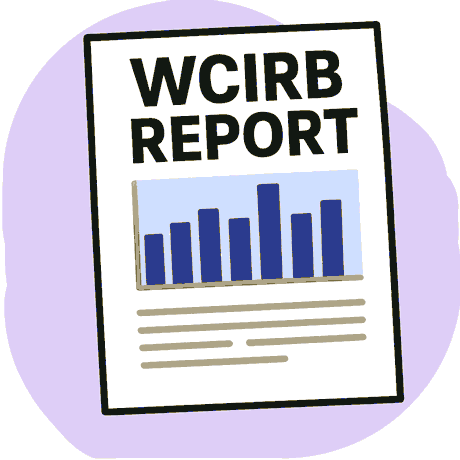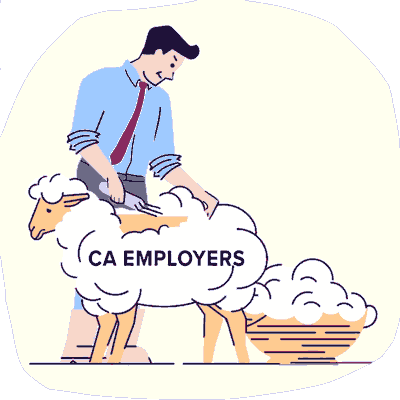CA Providers Among Lowest Paid as Employers Pay Increasing Premiums

California’s Insurance Commissioner, Ricardo Lara, recently increased the advisory pure premium rate by 8.7%, to $1.52 per $100 of payroll for workers’ compensation policies incepting after Sept 1, 2025.
California employers should be highly alarmed. While most states are seeing premium decreases, California employers’ costs continue to rise.
Lara blamed (in part) higher medical treatment costs for the premium hike. However, a new report from the Workers’ Compensation Research Institute (WCRI) offers a crucial insight: the California Official Medical Fee Schedule (OMFS), which determines reimbursements for treating injured workers, is among the lowest workers’ compensation fee schedules in the United States.
Moreover, the WCRI determined that California providers incur some of the highest practice expenses in the nation while receiving some of the lowest reimbursements for treating injured workers (emphases ours):
“...jurisdictions with some of the highest provider expenses, such as California…had some of the lowest workers’ compensation fee schedule reimbursement rates in the country.”
We commend the WCRI (of which daisyBill is a proud member) for its thoughtful, thorough approach to analyzing workers’ comp medical costs and transparently and carefully presenting the facts.
We continue to condemn the Workers’ Compensation Insurance Rating Bureau (WCIRB), a barely monitored, quasi-governmental organization run by insurers that consistently uses unverifiable insurer data to support its recommendations for higher employer premiums.
The WCRI report, with its verifiable data, undermines the preferred narrative of Commissioner Lara and insurer-funded organizations blaming anyone but the true culprits for California employers’ high workers’ comp costs: insurers, Third-Party Administrators, and their private equity backers.
CA OMFS: Among the Lowest in the Nation
As the graph below shows, California is on the low end of fee schedule reimbursement rates relative to Medicare reimbursement rates. In fact, overall fee schedule reimbursement for California providers is just 51% higher than Medicare.
Compare this with states like Nevada, which pays 200% over Medicare to treat injured workers. Of the states listed, 16 have fee schedules 100% more than (aka double) the Medicare rates.
The WCRI also notes the impact of how expensive it is for providers to treat injured workers, stating (emphases ours):
“...if we were to compare workers’ compensation fee schedule aggregate rates before adjusting for the interstate differences in expenses, we would conclude that reimbursement rates in California were 9 percent below the median state.
However, after adjusting for the fact that expenses for delivering medical care were higher in California than in most other states, the aggregate fee schedule rate was 17 percent below the median state.”
Again, the WCRI found no correlation between provider expenses and higher reimbursement rates, noting that “jurisdictions” with the high provider expenses, including California, also had low fee schedule reimbursement rates.
Actual Reimbursements Are Even Lower
Crucially, the WCRI report focuses on fee schedule reimbursement rates, not the actual amounts claims administrators pay to providers.
As claims administrators leverage mechanisms like Medical Provider Networks (MPNs) and Preferred Provider Organizations (PPOs), California providers often earn much less than OMFS rates.
daisyData analysis of over seven million workers’ comp payments demonstrates that physicians are paid approximately 83% of the amount due per the state fee schedule, with many physicians receiving less than Medicare rates to treat injured workers.
Where’s the Money Going?
So what’s actually driving California employers’ comp costs? Three words: Profitable administrative friction.
Bill review, Utilization Review, MPNs, and PPOs; these expenses, often excessive or downright needless, have almost nothing to do with delivering care to injured workers. Instead, employers' dollars largely feed the middlemen and their private equity investors.
WCRI: Better Data, Better Reporting
Unlike the WCIRB, the WCRI did not compile this report by blindly trusting insurers.
The fee schedule data that inform the report came directly from the Centers for Medicare and Medicaid Services, with specific state data from RefMed, an independent company that openly boasts “no affiliation to any insurance carrier, payer or physician association.”
In addition to demanding that the California Division of Workers’ Compensation follow the law and collect critical data, California needs to pay more attention to and give more weight to WCRI reports. Only then can stakeholders get a clearer picture of what really makes workers’ compensation in the Golden State so expensive.
Know exactly what payers owe your practice under the OMFS, every time. Click below to try our Fee Schedule Calculator free for 3 days:
TRY THE CALCULATOR
DaisyBill provides content as an insightful service to its readers and clients. It does not offer legal advice and cannot guarantee the accuracy or suitability of its content for a particular purpose.
.gif)






Everyone involved in the delivery and treatment for California injured workers should be aware of these facts. It should be mandated knowledge, if you have the authority to designate who's administering your claims, managing care and delivering healthcare and services to your employees. Thanks Daisy Bill.